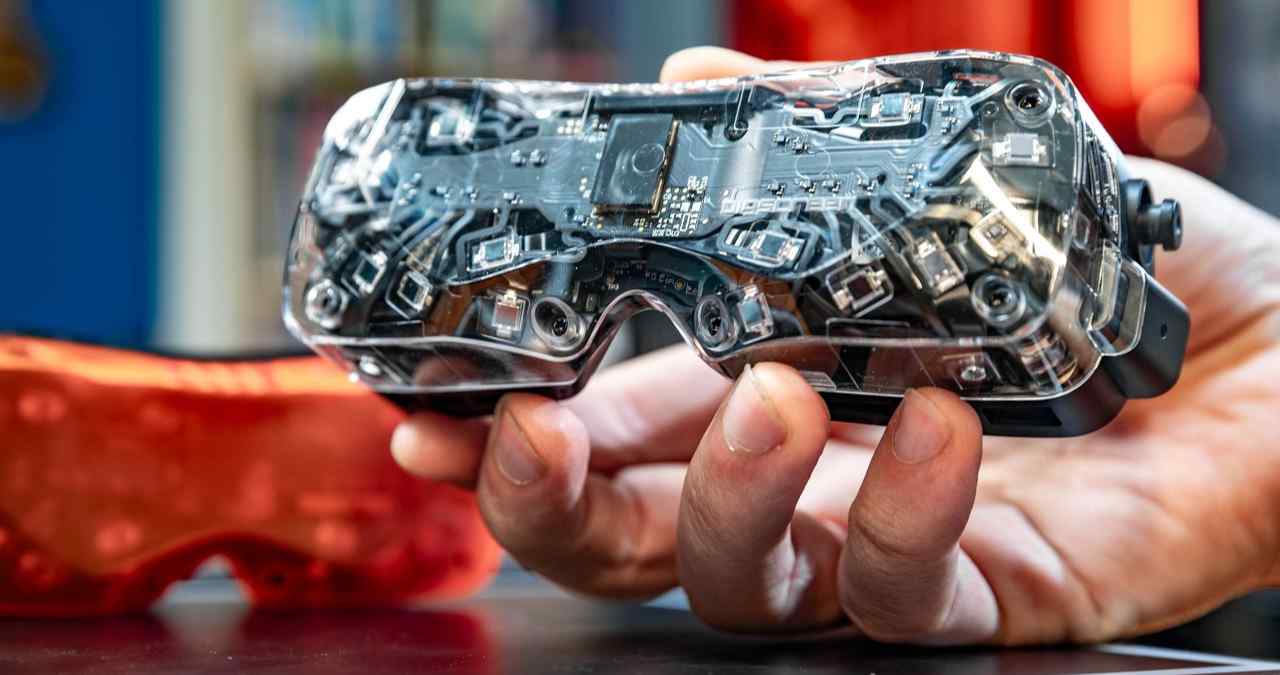A new generation of micro-headsets hits the market
Bigscreen has officially begun shipping its second-generation headset, the Beyond 2, marking a significant upgrade over the original in both display and ergonomics. The company is sticking to its minimal form factor, but nearly every internal component has been reworked.
With Meta and Apple dominating headlines around mixed reality, Bigscreen’s focus remains squarely on high-end, PC-based VR. It’s not chasing standalone features or generalist experiences. Instead, the Beyond 2 is designed to be lean, purpose-built, and tailored for dedicated users who want premium visuals in the smallest package possible.
OLED microdisplays replace the pancake stack
The most notable change is the shift to OLED microdisplays with a resolution of 3280×3280 per eye. These new panels replace the pancake lens system from the original model, offering deeper contrast, lower latency, and a more compact optical setup.
Visual sharpness, especially in central focus areas, has improved, while motion clarity benefits from the OLED response times. Field of view remains consistent with the previous model at around 90 to 100 degrees, depending on user configuration, but the visual quality is sharper overall. Text readability and dark scene performance get a notable bump here.
Faceplate design reworked for comfort and heat
One of the more subtle but important updates is the redesigned face interface. The new version improves airflow and reduces heat buildup during long sessions. The previous model’s minimal padding and thermal management made it feel tight after extended use, something the new ventilation system tries to address.
The updated magnet-based attachment system also makes swapping or cleaning facepads less of a chore. Since each headset is still custom-built based on 3D face scans, this is more about fine-tuning an already unique fit rather than offering a one-size-fits-all design.
Tracking now includes SteamVR 2.0 base station support
Tracking gets a performance lift as well, now fully supporting SteamVR 2.0 base stations, which allows for better precision and larger tracking volumes. The headset still doesn’t ship with controllers, relying entirely on the existing SteamVR ecosystem.
This makes it ideal for users who already own hardware like Index controllers or Vive trackers. That said, it also means newcomers will need to bring their own ecosystem, which limits its appeal to more invested users who are already deep into PC VR setups.
Lightweight form factor remains the key differentiator
At under 200 grams, the Beyond 2 still holds the title of lightest tethered headset in its class. It’s smaller than anything else on the PC market and significantly less bulky than devices like the Valve Index or Pimax Crystal.
This weight reduction doesn’t come at the expense of build quality, but it does demand sacrifices. No integrated audio, no standalone use, and no built-in battery. It’s a headset for users who want less friction between them and their simulation, and who are willing to bring their own solutions for sound and input.
Beyond 2 doubles down on its niche
Bigscreen isn’t trying to broaden its audience with this release. The Beyond 2 is still aimed at enthusiasts, sim players, and developers who care more about fidelity and comfort than mainstream features. It’s not a Quest competitor, and it’s not trying to be.
What it delivers is a refined, compact VR experience that strips away the extra layers. And in doing so, it gives a clear message: if you already have the gear and care about top-tier visual clarity in a featherlight build, Beyond 2 is one of the few options that makes that tradeoff worth it.
Virtual Reality Explorer & Game Reviewer
Always the first to plug in. VRSCOUT dives head-first into the most immersive VR worlds, analyzing mechanics, comfort, innovation, and that elusive “presence” factor. If he says it’s worth it, it probably is.




